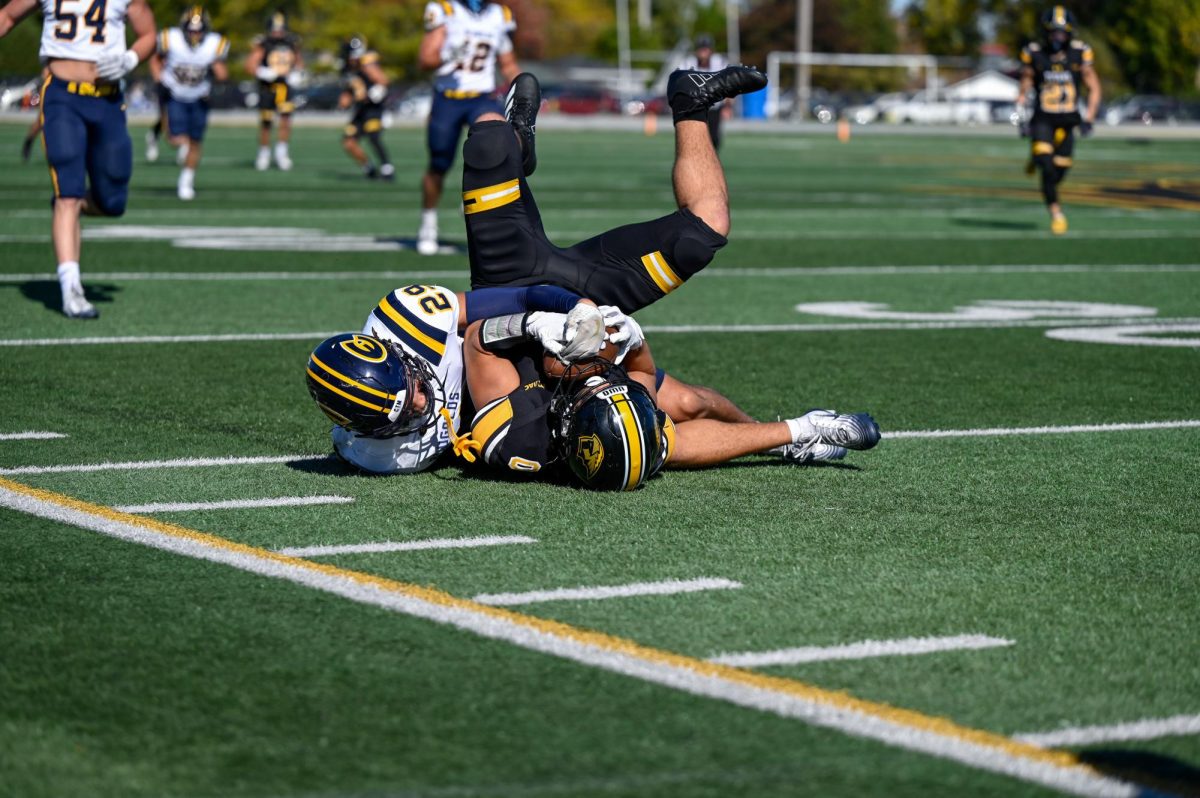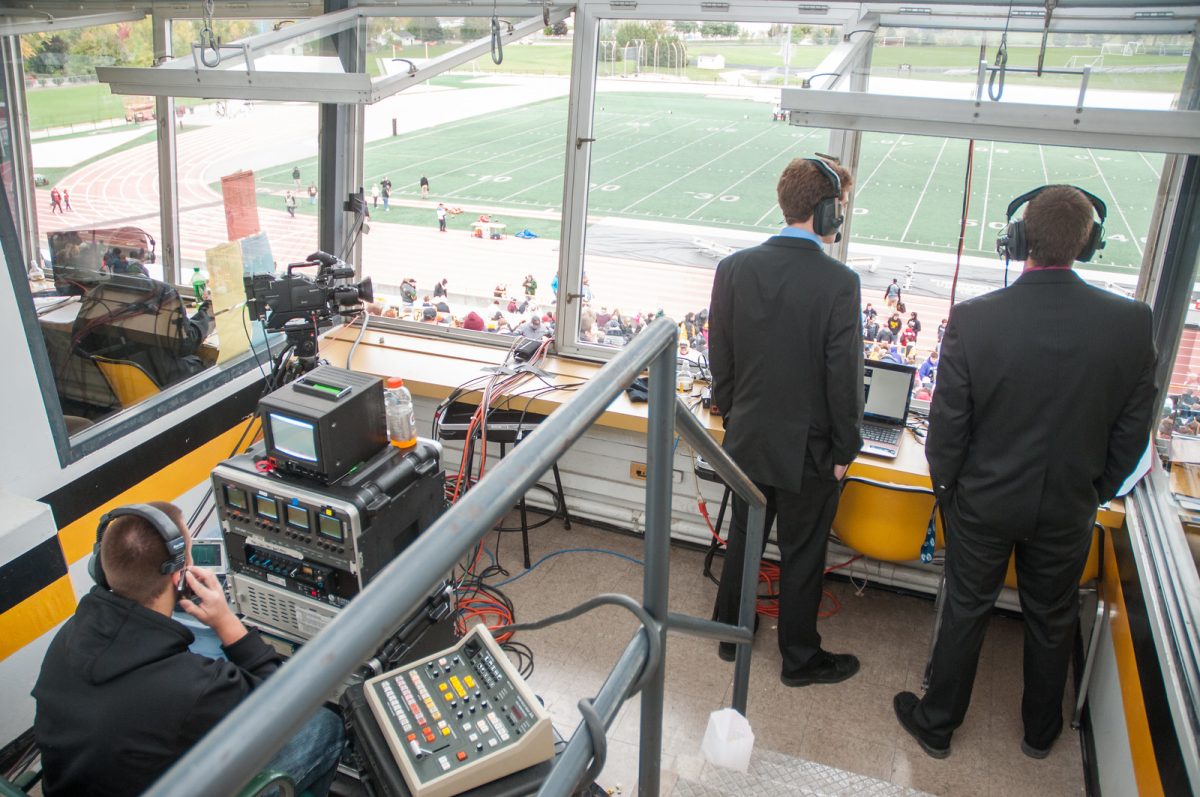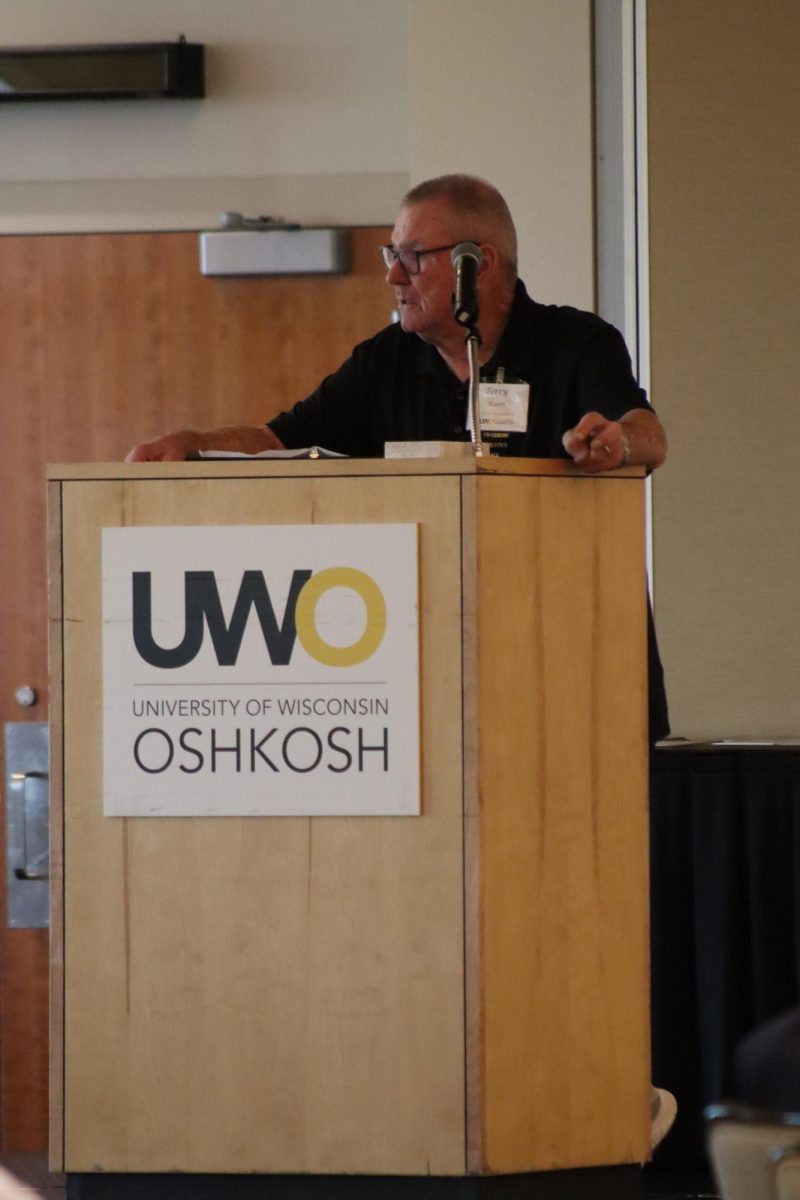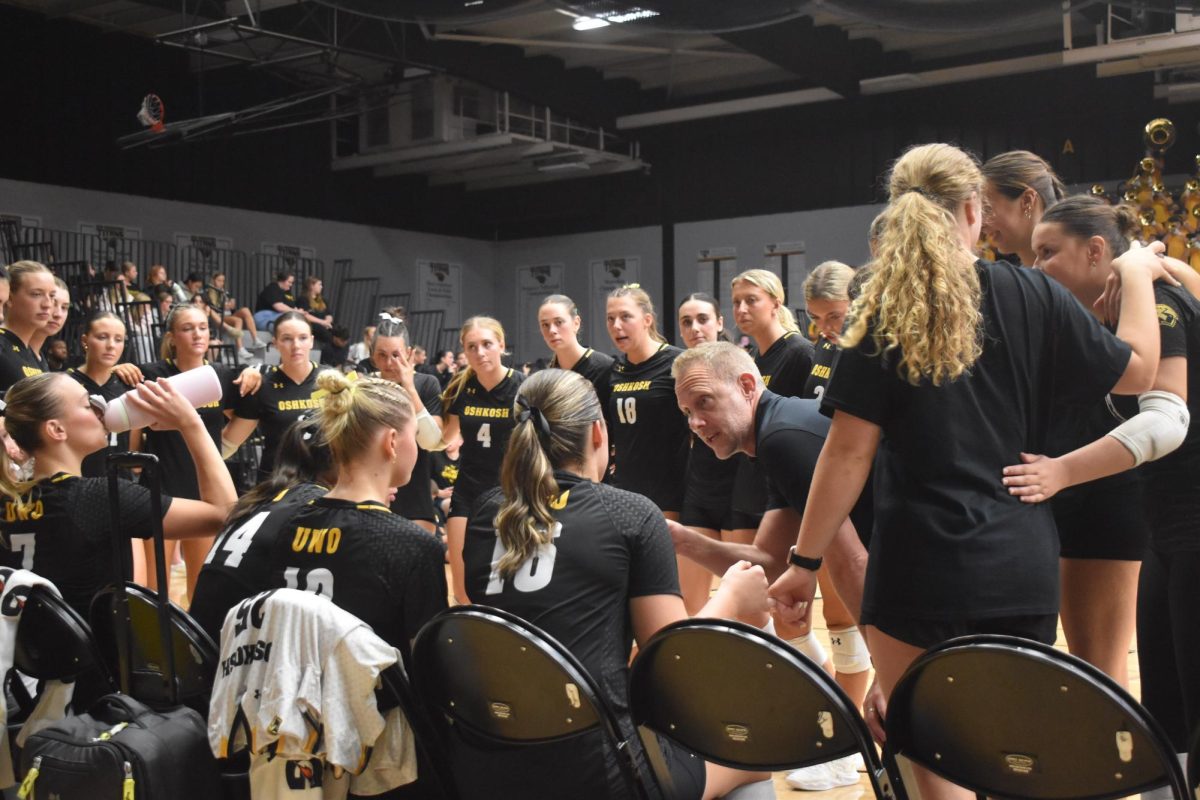As a former University of Wisconsin Oshkosh football coach, Steven Leib knows first-hand the ins and outs of being a student athlete at the Division III level. Not having an umbrella over the entirety of the athletics department made it difficult to draw funds into the various programs.
The status of athletic fundraising was altered two years ago with the creation of the League of Titans, and Leib said the background of his coaching career provided him insight into what it takes to make it at that level.
“I am an Oshkosh alum, having coached football here for 12 years and just retired, so I have been involved in UW Oshkosh athletics since I have been in grade school,” Leib said. “The booster club is kind of inclusive, or at least was all inclusive, with all sports. So, you kind of had to pick which God you were going to pray to. What we did, was we kind of filtered in the UW Oshkosh lettermen’s club and kind of filled that in with the alumni association, and the booster club kind of molded into the same thing.”
In Divisions I, II and III, many universities receive outside funding to support their expenses, specifically their athletics departments. UWO is no different, with the League of Titans serving as the booster club associated with the institution.
The League of Titans is a newly established funding organization that, through the help of participating donors, helps provide athletic teams with necessary funding.
According to its website, the purpose of the League of Titans is to “offer our members the privilege of helping talented UWO student-athletes receive a top-tier education while pursuing their goals both on and off the competition field.”
Club History
The LOT has been around for two years, behind the proverbial curve that Oshkosh’s fellow Wisconsin Intercollegiate Athletic Conference competitors have set for booster club involvement. UW-Whitewater has had a form of a booster club included in its athletics department funding for 44 consecutive years. Not all booster clubs are that old, though, as UW-Eau Claire’s Blugold Booster Club has only existed since 2014.
All seven men’s and ten women’s university-sanctioned sports are supported through funds raised by the League, and donors have the ability to designate which specific sports they would like to have their funds support. If there is not a designation area, the money goes toward funding the overall athletics department for different projects.
Even though it began in 2015, LOT board member and UW Oshkosh Chief Communications Officer Jamie Ceman said the club has had an uptick in popularity in its brief existence.
“This is only the second year of League of Titans, so it’s really just getting off the ground,” Ceman said. “From last year to this year, we have seen steady fundraising but increased attendance at events.”
Sports such as wrestling and gymnastics only exist on the club level through UWO, meaning their status is not the same as sports such as baseball, basketball and football. However, LOT board member Steven Leib said these sports still receive funding despite being labeled differently.
“What is nice about it is that a lot of the funds that we generate through our activities, pre-game or halftime socials are given to everybody,” Leib said. “The gymnastics program, which is a club sport, or wrestling, which is a club sport, they need something and sometimes all they need is permission for funds. And, if they have funds, [UWO athletic director] Darryl [Sims] provides them a percent of what they need.”
According to the League of Titans membership document provided by UWO, the amount raised in the first full donation period of the LOT was $6,050 from 18 members.
In 2016-17 alone, there have been 70 members that have donated to the athletic department through the League, an increase of 52 noted participants. Forty-one donations have football-only distinctions to their names, with 11 to baseball and six to the athletic department with no specific sport designation.
The remaining 12 donations were mixed between men’s and women’s basketball, softball, track and field, women’s golf, wrestling, women’s tennis and volleyball.
Community Reach
The increase in popularity and support stems from many different areas, but LOT board member Rob Kleman said the community outreach policies have changed since the implementation of the club, paving the way for condensed community assistance.
“There is no question that it has increased and that the awareness is building,” Kleman said. “When you have something like this, it is going to take time. One of the benefits of the League of Titans is sometimes you may have five different sporting [events], so part of the problem is that you do not want seven different calls to a business for support. This is designed to help eliminate that and approach businesses on a more coordinated basis throughout the entire athletic department.”
Being able to condense the reach into the Oshkosh community has helped the club in many ways that were not necessarily seen as possible before its creation. Kleman said regardless of the LOT’s focus for the athletic department, individual sports that have their own clubs are not limited in their fundraising outreach.
“It is more of a coordinated effort to support UW Oshkosh athletics,” Kleman said. “This is designed to be an overarching coordinating entity for all of the athletics. Even though the League of Titans was formed, it does not prohibit any of the individual programs from going out and creating additional fundraising activities.”
Not all sports on campus do have individual booster clubs. Football has the Titan Touchdown club, which was created due to the efforts of current UWO head football coach Pat Cerroni and current LOT board member Steven Leib.
Fundraising opportunities occur during nine months of the year, only not conducting events during the summer months when school is not in session. Kleman said the events the League of Titans are currently known best for are spirit tents, which help bring prospective donors to athletic events.
“[Spirit tents are] the most visible events,” Kleman said. “Ultimately, you will see the League of Titans, board members and hopefully others to try and keep cultivating additional support for corporational support or organizational support in the community and in the area. Whatever that support means, I think ultimately that is what we need to do is grow that base.”
All nine members of the WIAC have booster clubs tied into their athletic department funding. Even with UWO being one of the last WIAC schools to establish an overarching booster club, the progress that has been made is shown through the funds raised.
Leib said Oshkosh did not create the League of Titans to try and catch up.
“More or less, I think we wanted to have a booster club that really took care of all sports, everything that fell underneath our Titan athletic banner,” Leib said. “Generally, we want to promote athletics, and not just at the university level, but in our community and within our alumni.”
Overall coordination of the community outreach is another facet that Kleman said the League of Titans helps address.
“I think it was more to coordinate better all the various programs and all the various fundraising opportunities,” Kleman said. “I think also it is important to give these individual programs a vehicle to raise funds. To become a member of the League of Titans, you can just write your check and decide your level of contribution and just be a general supporter. It also gives athletic departments that were not as organized on the fundraising side organization [chances].”
2017 Financial Aspects
After the entrance fees, members must donate no less than $150 to become a Clash member, $300 for the VIP level, $500 for the MVP class and $1,000 to be a Captain.
Currently, there are no members who fall under the Champion ($1,500) or Titan ($3,000) levels.
For 2016-17, of the 70 members, 17 donated to the Clash level, 44 were VIPs, five were MVPs and two were Captains.
In order to raise awareness to bring in prospective members, Leib said the LOT has had to establish a consistent presence in the community, which has led to wondrous results.
“We have a nine-month life cycle because it is when school starts and when school ends,” Leib said. “One quarter of our year is already bounced out of there, so I think we are really headed in the right direction. It is about building a brand, and it is a slow, tedious process, but what we want to do is when you are ready to make a big splash, you want to have all of your Ts crossed and Is dotted.”








